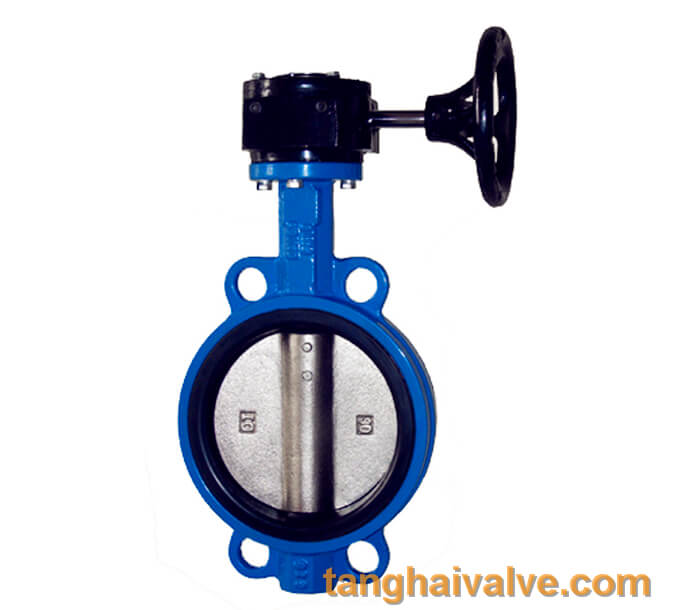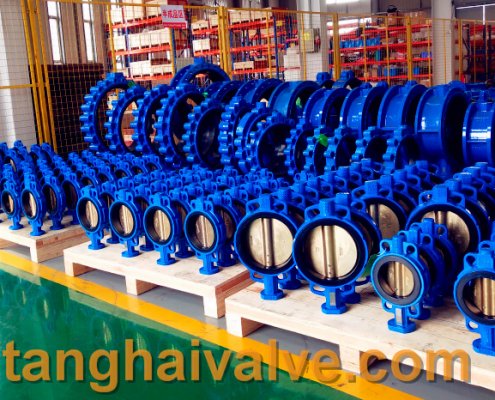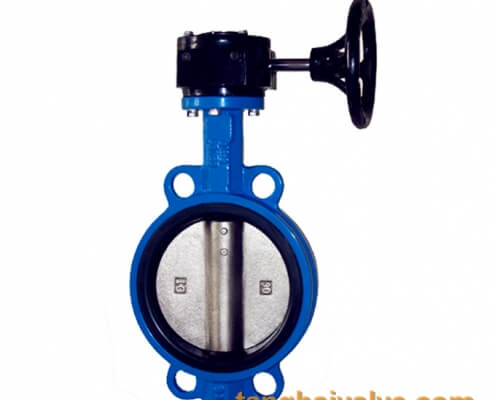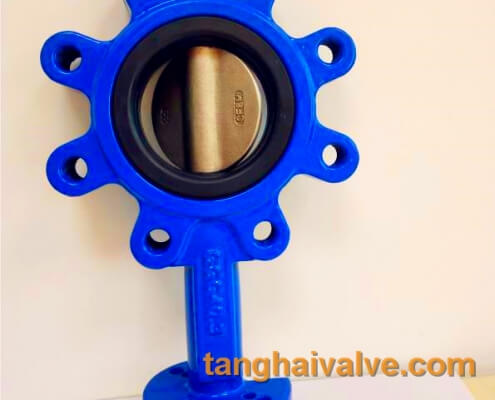Advantages and Features of Center-lined Wafer Butterfly Valve
The centerline wafer butterfly valve is a kind of centerline butterfly valve, which has two characteristics of wafer connection and centerline sealing. Today, the advantages and characteristics of the centerline wafer butterfly valve are based on the flange butterfly valve. details as follows:

Wafer type butterfly valve with worm gear
Pressure Level
The centerline wafer butterfly valve generally does not have a high pressure, and cannot be made with a higher pressure level like the flange butterfly valve. The nominal pressure of flanged butterfly valves is higher than that of wafer butterfly valves.
Install
During installation, the centerline wafer butterfly valve is generally installed with a matching flange, and the flange butterfly valve does not need to be equipped separately. The valve bolt length of the wafer butterfly valve will be longer, so the construction accuracy is higher. Because if the flanges on both sides are misaligned, the bolts will be subjected to greater shearing force, and the valve is prone to leakage.
Repair and maintenance
The centerline wafer butterfly valve generally cannot be used in the end of the pipeline and the downstream occasions that need to be disassembled, because when the downstream flange is removed, the wafer valve will fall. In this case, another short section must be made for disassembly. The flanged butterfly valve does not have the above problems, but the cost will be relatively high. The wafer butterfly valve has no flanges at both ends of the valve body, only a few guide bolt holes, and the valve is connected with the flange at the end by a set of bolts/nuts. In contrast, disassembly is more convenient, and the valve cost is lower, but the disadvantage is that one sealing surface has a problem, and both sealing surfaces have to be disassembled.
Due to installation reasons, if you encounter a situation where you need to install a blind plate, this situation is actually quite often encountered. In this situation, the midline wafer butterfly valve can only be installed with transitional pipe sections or replaced with other types of valves. It is impossible to disassemble the blind plate on the center line of the clamp butterfly valve. It is necessary to add a pair of flanges to the straight pipe section behind the valve after stopping, and at the same time add the figure 8 blind plate to avoid insufficient position when the blind plate is added in the future.
Better tightness
The centerline wafer butterfly valve has a poorer sealing effect than the flange butterfly valve. For example, the transportation of slurry media causes blockage. The advantage of the center line to clamp butterfly valve is that it is easy to disassemble and assemble, but it will leak if it is not installed well. Flanged butterfly valves are expensive. The valve is equipped with flanges. The flanges on both ends of the valve are connected to the pipe flanges with bolts. The sealing performance is better than that of the clamp butterfly valve. Flange butterfly valves are easier to make eccentricity, and multiple eccentricities can achieve excellent sealing performance, but it is not easy to achieve a wafer butterfly valve. If the centerline wafer butterfly valve is a soft sealing butterfly valve, the rubber liner damage cannot be repaired on site, but the flange type can be repaired.
In summary, the centerline wafer butterfly valve has low cost and strong adaptability to installation space. The disadvantage is that the sealing performance is not as good as the eccentric butterfly valve and the flange butterfly valve, and the disassembly and maintenance will be slightly more troublesome than the flange butterfly valve. Under the condition that the medium pressure is not particularly high and the working conditions are ordinary, the centerline wafer butterfly valve is still a good choice from the comprehensive examination of cost, sealing performance, installation and maintenance.
TH Valve is a professional manufacturer of butterfly valve, gate valve, check valve, globe valve, knife gate valve, ball valve with API, JIS, DIN standard, used in Oil, Gas, Marine industry, Water supply and drainage, fire fighting, shipbuilding, water treatment and other systems, with Nominal Diameter of DN50 to DN1200, NBR/EPDM/VITON, Certificates & Approvals: DNV-GL, Lloyds, DNV, BV, API, ABS, CCS. Standards: EN 593, API609, API6D
Video of center-lined butterfly valve:
Related news/knowledge:
Characteristics of the centerline wafer butterfly valve
Centerline flange butterfly valve
Comparison of the characteristics of wafer butterfly valves and flanged butterfly valves
What kind of centerline wafer butterfly valve is a high-quality butterfly valve


 tanghaivalve.com
tanghaivalve.com tanghaivalve.com
tanghaivalve.com

 © Copyright 2020 Tianjin Tanghaidongyang Valve Co., Ltd. All Rights Reserved.
© Copyright 2020 Tianjin Tanghaidongyang Valve Co., Ltd. All Rights Reserved.